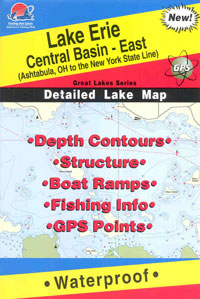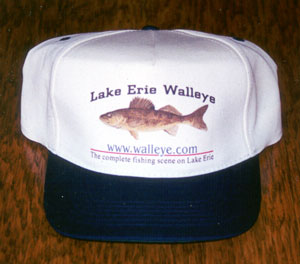Beating the Heat for
Big Summer Walleyes
By Rick Olson
Scorching daytime temperatures and a mile high sun doesn't exactly
sound like ideal conditions for catching numbers of big walleyes but it can be
done, especially if you know where to look. To be successful anglers
will have to give up on what had been productive just a few short weeks
ago and get with a program more in tune with a walleye’s present needs.
ideal conditions for catching numbers of big walleyes but it can be
done, especially if you know where to look. To be successful anglers
will have to give up on what had been productive just a few short weeks
ago and get with a program more in tune with a walleye’s present needs.
When the hot summer sun starts bearing down water temps can push into
the lukewarm range and early season patterns can quickly dry up. When it
happens many anglers make the mistake of believing that the walleyes are
simply not feeding, but nothing could be further from the truth. In
fact, walleyes will feed even more heavily at this time of the year and
it’s when they make their biggest growth gains.
One of the reasons anglers can find the going during the summer
months a little tough is because make they haven’t made the necessary
adjustments required to stay with a fish that’s on the move. Walleyes
make a living by taking advantage of their opportunities, and in many
cases those opportunities are no where near where they where at the
beginning of the season.
As spring slides into summer there is a shallow to deep migration
that occurs on most bodies of water. The migration doesn’t happen
overnight, and not all of the walleyes in a system make the move to deep
structure. Instead, the process more likely begins with a few scattered
groups of fish showing up on deeper haunts like sunken humps, underwater
points, and even flats, followed by a slow and steady migration that
eventually results in fishable numbers of walleyes. As more and more
walleyes make the deeper move, concentrations of fish begin to build up
creating a terrific opportunity for anglers in the know.
Knowing it can happen is the easy part, while capitalizing on it
takes a little more effort. To get the most out of a good summer pattern
you have to be prepared to give up on what you think you know, and let
the fish do the talking. One of the most appealing aspects of
locating walleyes holding on deep structure is the fact that they show
up readily on good electronics. High quality electronics like the
Raymarine C Series that can incorporate high definition fish finding
capabilities with G.P.S. can make the job of finding deep summer fish a
whole lot easier.
Besides the ability to mark fish holding tight to the bottom, or bust
out schools of bait and show individual fish, the C-Series can also
combine Global Positioning with incredibly accurate mapping, like
Navionics Gold charts. When you do make a move off shore it's easy to
become confused as to your exact location, especially on big water, and
the ability to display an accurate map along with your present condition
can be invaluable. The result is more time spent fishing and less time
wasted looking for a particular spot.
The key to whole fish finding process is keeping your lines in the
boat, and relying totally on your electronics to divulge the whereabouts
of deep running walleyes. It takes a little self control, but you can
save a ton of valuable time if you do the investigative work up front.
The fact is you’ll never ever catch them where they’re not, and if
you’re not marking; you’re not on ‘em..
Good summer presentations involve an element of speed, like trolling
crankbaits or spinners. With an increase in water temperature a
walleye’s metabolism increases accordingly. A quicker moving
bait appeals to that bump in metabolism and will often get snapped up
while a slower offering gets completely ignored.
A top pick for working unfamiliar waters would have to be a spinner
and live bait combination behind a heavy bottom bouncer. Bottom bouncers
run relatively snag free which can be a big plus when working an uneven
bottom with plenty of potential hang-ups. They also allow you to keep
your bait running close to the bottom without actually dragging it, and
helps to keep your offering at ‘eye level.
There are exceptions to the deep summer patterns, and includes dark
or stained bodies of water where visibility is extremely limited. There
may still be a shallow to deep migration but it may occur on a much
smaller scale. The thing is the fish are still there, and some of them
can still be caught, and it might as well be by you.





 ideal conditions for catching numbers of big walleyes but it can be
done, especially if you know where to look. To be successful anglers
will have to give up on what had been productive just a few short weeks
ago and get with a program more in tune with a walleye’s present needs.
ideal conditions for catching numbers of big walleyes but it can be
done, especially if you know where to look. To be successful anglers
will have to give up on what had been productive just a few short weeks
ago and get with a program more in tune with a walleye’s present needs.